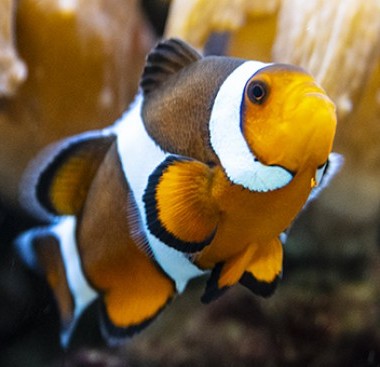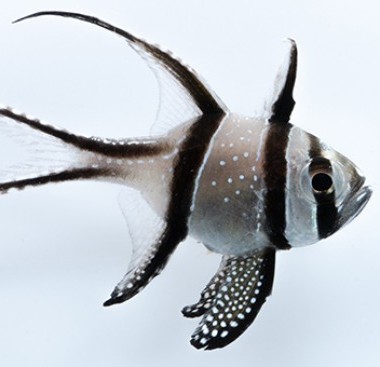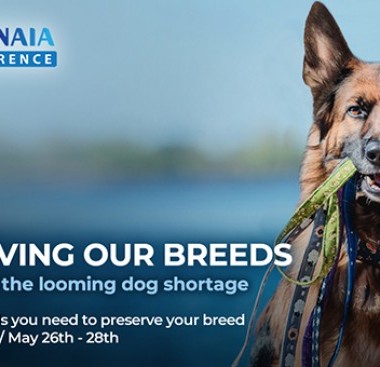The Retail Pet Store Final Rule and You!
A review-in-progress by NAIA
By: Patti Strand Date: 09/15/2013 Category: | Animal Legislation | Canine Issues |
Since May 2012, purebred dog and cat enthusiasts, rabbit and other small animal breeders and animal activists have been focused on the USDA’s proposed rule updating the retail pet store definition in the federal Animal Welfare Act (AWA). The definition is important because entities defined as retail pet stores are exempt from USDA licensing as dealers, a designation that requires fees and federal inspections. Potentially affected parties have been writing comment letters, signing petitions, lobbying anyone who’d listen and waiting anxiously for the result for more than a year.
Then, on Tuesday, September 10, 2013, USDA hosted a national conference call for stakeholders to announce their final rule. To say that stakeholders were disheartened when they left that call is a gross understatement. Leaving that call, most participants believed that despite our incredible efforts to inform USDA about the unintended consequences of their proposal, the final rule was virtually unchanged from the original and would affect many residential breeders. The notion that the USDA would disregard literally thousands of intelligent public comments heightened the alarm.
A light at the end of the tunnel
Just as the depression started setting in, though, officials at USDA posted the Retail Pet Store docket, a 91-page document containing a summary of the rule, the rationale for it, and USDA’s response to many of the public comments. The good news is that a careful reading of this document alleviates many of our greatest concerns, for it tells us how the agency interprets the new rule. Given the complexity of the AWA, its layers of regulations, unfamiliar semantics and the history of agency interpretation and enforcement, this document is the key to understanding how the retail pet store rule will be implemented and it shows that the agency did, in fact, pay attention to our comments.
So briefly, here is an overview of the issue:
Background Skip background and go directly to Key facts for understanding the new rule
The laws regulating commercial pet breeders were written more than 40 years ago for commercial breeders selling their dogs through pet stores. At the time virtually all commercial breeders sold some or all of their dogs to pet stores, so it’s fair to say that the existing regulations were written for breeders who were unambiguously commercial. With the advent of the Internet, many commercial dog breeders quit selling to pet stores and started selling directly to the consumer. Under the outdated regulations, this change in selling practices meant that many commercial breeders no longer were required to be licensed by USDA as pet dealers, even if they were large scale pet breeders selling their puppies to consumers through remote methods.
USDA entered into the rulemaking process to update their regulations to comply with the AWA’s original legislative intent by bringing these pet breeders under regulation so that animals not being seen by the public in advance of a sale could be monitored for their health and humane treatment.
NAIA appreciates the need for this regulatory change, although the approach used for achieving it has been difficult to understand. The intricacy of this rulemaking exercise arises from the fact that the revision needs to be bootstrapped onto existing regulations. On its face, the wording seems to indicate that whether you have 50 breeding females or 5, if you sell even one puppy sight unseen, USDA could require you to get a license, and that such licensing could be applied to small scale hobby breeders. This possibility has been a source of frustration and concern because the driving force that led to this rulemaking was a report from the Office of the Inspector General (OIG), which cited problems in large scale breeding operations.
Key facts for understanding the new rule:
Under the Animal Welfare Act (AWA) the definition of a dealer includes anyone who gets money for buying, selling or negotiating the sale of an animal for 1) research, 2) teaching, 3) testing,
4) experimentation, 5) exhibition or 6) for use as a pet at the retail level, or any dog sold for hunting, security or breeding at the wholesale level.
A retail pet store, as revised, not only refers to actual brick and mortar stores that sell pets to the public, but also to breeders who sell dogs directly to the public, so long as they sell them in person. Breeders defined as retail pet stores are exempt from USDA licensing as pet dealers under the AWA unless they sell to a research facility, an exhibitor (such as a zoo or circus) or a dealer (wholesale). Under the revised definition of retail pet store, you are still exempt from licensing as long as you sell in person with you, the buyer and the animal present. Breeders who sell dogs for use as pets (dealer) sight unseen are not classified as retail pet stores, regardless of how the buyer is connected to them and must, therefore, be licensed if they have more than 4 breeding females. Breeders who sell dogs for breeding purposes to other breeders, for instance, are not selling dogs for use as pets, and are therefore not dealers.
Notably, the interpretation of the regulations is left to the USDA, the agency that is responsible for enforcement. That makes the Department’s regulatory intent, which can be found in the USDA docket for this rule very important in unscrambling areas of concern. Many of our questions and ones that we’ve received from others are addressed in the USDA docket.
Our legislative director, Julian Prager, JD, has carefully reviewed the docket and distilled his interpretations for us regarding who is considered a dealer and who will be exempt from being a dealer under this regulatory change. In some cases the language is too vague to be certain, so we are giving you our best interpretation. In some instances statements from the Department seem to be ambiguous:
1. All dealers must be licensed by APHIS.
2. To be a dealer, a breeder must buy, sell or negotiate the sale of your animals at retail for compensation or profit and sell for one of six categories: 1) research, 2) teaching, 3) testing, 4) experimentation, 5) exhibition (does not include dog or cat shows), or 6) for use as a pet or sell dogs at wholesale for hunting, security or breeding, unless otherwise exempt.
a. Sales of animals for other purposes do not meet the definition of dealer and do not require licensing. The purpose of the sale of the animals is the controlling factor. For example, selling an animal for breeding stock or as a working dog at retail does not require you to be licensed under the AWA.
1. A breeding done to maintain bloodlines or to produce herding dogs may produce an animal not suitable for the purpose for which it is bred. That animal may be sold as a pet if the intention in breeding was to produce breeding or herding stock and not an animal for sale as a pet and you continue to advertise your animals for sale as breeding or herding stock or another purpose not included in the six dealer purposes.
2. The occasional sale of an animal sight unseen who lacks the characteristics to be sold for its intended purpose is permissible and will not automatically revoke your retail pet store status, if the seller continues to market his or her animals for that other purpose.
3. If you market your dogs as being for sale as pets, APHIS may investigate the purpose of your sales.
4. Shipping semen, shipping a bitch or an animal for breeding purposes does not require licensing.
b. The buyer of an animal is the person who takes possession at the time of sale or delivery, not necessarily the ultimate owner. The buyer must be present with the seller and the animal at the time of sale or delivery, net necessarily the ultimate owner.
3. Retail pet stores are not dealers and are exempt from licensing.
a. You are exempt from licensing as a retail pet store no matter how many breeding females you own, as long as the sales take place face-to-face. The sale of an animal without the buyer, seller and animal being at the same location at the time of sale or delivery (face-to-face) removes you from the exempt category.
1. The location of the face-to-face transaction can be anywhere.
2. A rescue organization that transports an animal via its volunteers conducts a face-to-face transaction when the volunteer, the animal and the adopter are together in one location.
b. Anyone maintaining four or fewer breeding females (any combination of species) and who sells only their offspring born and raised on their premises for pets or exhibition is exempt as a retail pet store as long as they are not otherwise required to be licensed.
c. The sale of an animal to a research facility, exhibitor (does not include dog or cat shows), or a dealer (wholesale) removes you from the exempt category.
4. A “breeding female:”
a. The female animal must:
1. be capable of being bred, as determined by an APHIS inspector based, in part, on her age, health and fitness for breeding, and
2. have their offspring sold as pets.
b. Does not include females capable of breeding who are bred for purposes other than the six dealer defined purposes.
More clarification is needed on the issue of puppies received in lieu of a stud service or for the receipt of a puppy back from the sale of a female on breeder's terms. Although these do not qualify for the exemption based on owning four or fewer breeding females and selling puppies born and raised on your premises, APHIS might find their sale exempt under other provisions of the AWA regulations. Similarly, further clarification is needed on the sale of dogs born by c-section at a veterinary practice. Of course, none of this is any concern as long as the dogs are sold in face-to-face transactions.
There are dozens of other nuances that need to be clarified in order to understand the impact of the new rule, but our take away is this:
- It is not the regulatory intent of USDA to regulate residential breeders, unless they are clearly breeding for the purpose of selling pets.
- If you keep 5 breeding females and sell even one dog, cat, etc., remotely, for use as a pet and are not engaged in one of the activities that are exempted from being a dealer, you must be licensed.
- If you sell all of your puppies in person, you may keep as many breeding females as your local laws allow and not be regulated by the federal government.
NAIA will be reviewing these regulatory changes in more depth in the coming days and will report more as our remaining questions are answered. In addition, we are hosting conference calls with interested parties to further clarify the issues. Interested parties can contact us at support@naiaonline.org to participate.

References:
- USDA Q and A:http://www.aphis.usda.gov/publications/animal_welfare/2013/faq_retail_pets_final_rule.pdf
- USDA Docket 2011-2003 for the retail pet store rule: http://www.aphis.usda.gov/newsroom/2013/09/pdf/pet_retail_docket_2011-003.pdf
- NAIA’s Comment Letter: https://www.naiaonline.org/naia-library/articles//naia-comments-usda-retail-pet-store-licensing-exemptions/
- NAIA - Deadline Looms: Send your comments to USDA APHIS: https://www.naiaonline.org/naia-library/articles/send-your-comments-to-usda-aphis/
- NAIA - The USDA Proposed Rule and You: https://www.naiaonline.org/naia-library/articles/the-usda-proposed-rule-and-you/
About The Author
All Authors Of This Article: | Patti Strand |











